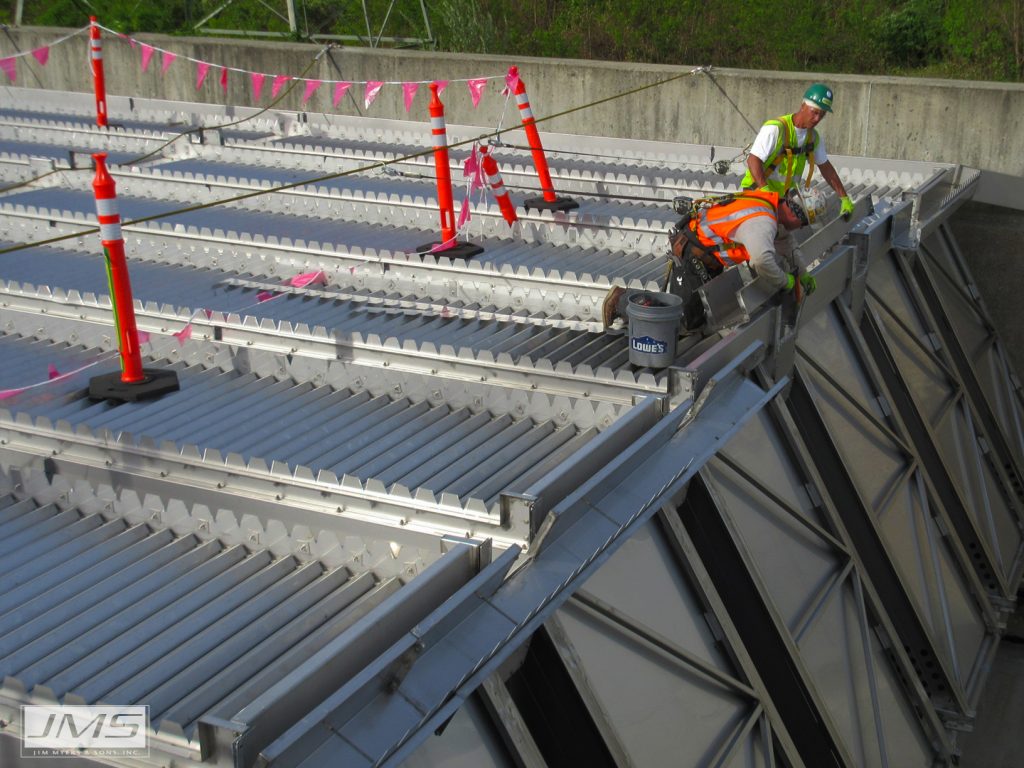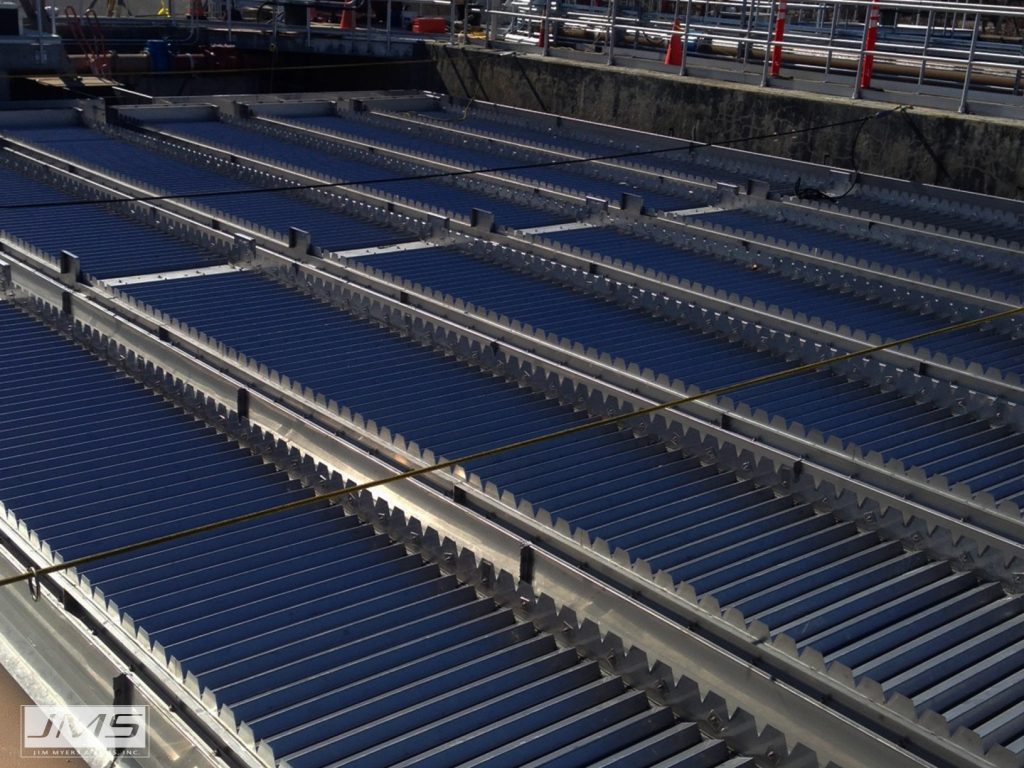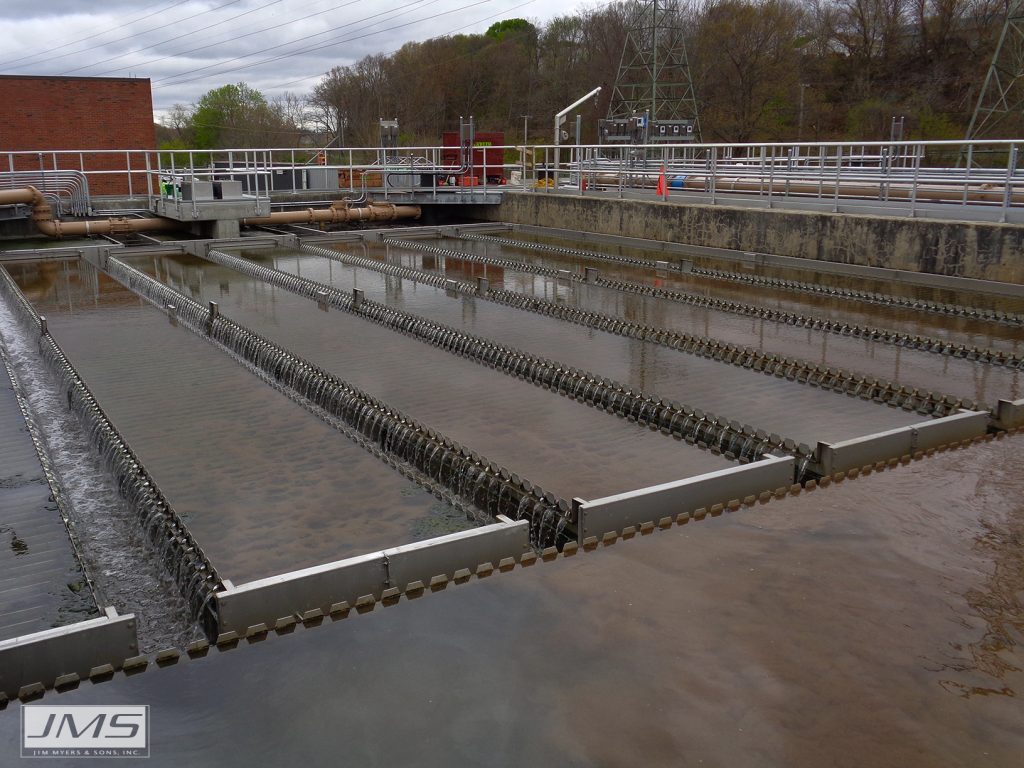Both water and wastewater projects are often challenged to make the most of their process (optimize solids removal) using existing infrastructure. The more population, the greater the need is for liquid solids separation. But, greater population can also mean less land for plant expansion, and a need to keep costs within control to maximize the public’s investment. Back in 1904 Sanitary Engineer Allen Hazen introduced the concept that sedimentation is a function of surface area. Today, Lamella sedimentation is used in both the water and wastewater treatment processes. Wastewater Plate Settlers are becoming more popular in the USA.
The use of Plate Settlers, often called Inclined Plate Settlers, or Lamella Plates, is quickly developing at Wastewater Treatment Plants worldwide. The case history below describes the innovative approach used at a New England wastewater treatment plant to maximize solids removal using existing infrastructure with the use of Plate Settlers in the Secondary Treatment Process.


Wastewater Plate Settler Case History
Background: Woonsocket, RI is a southern New England area/location on the banks of the Blackstone River. The community wastewater plant was built in the 1930s and has had several upgrades over the years. In those same years, the plant was challenged to meet more stringent regulatory requirements as defined by the facility’s RIPDES permit. In 2012 the city selected prominent engineering company Ch2M Hill, now Jacobs, to operate the existing regional facility, and upgrade the plant to improve its capabilities and water quality. River water quality was a concern, with a target to lower nutrients (nitrogen and phosphorus) discharge.
Problem: This is where the challenge began. The plant was saddled with a lot of older equipment, and strict regulatory limits. Considerable effort was made to use existing infrastructure to lower costs. Considering the complexity of the plant, and new RIPDES limits, only well thought out changes and proven processes would be considered. A two stage Activated Sludge Process was chosen due to its effective nitrogen and phosphorus removal.
Solution: The plant modifications used the existing aeration tanks which were modified into a two-stage activated sludge process. In the first stage of the Secondary Treatment, settling is achieved by gravity. Plate Settlers were installed in the last zone of this existing basin where after significant solids have settled, they polish the remaining solids. The addition of Plate Settlers was key to solids removal within the existing footprint and avoided the addition of an additional basin.


The projected plate area was used as the basis for settling, along with the expected incoming TSS. During the trial period, operations at the plant were continued, and construction required taking basins off line. Loading rates on the Plate Settlers during that period were much higher than design rates. Even during these periods the Plate Settlers have been able to handle a solids load with significant organic content.
Results: Operational results remain within design parameters, including: 1) effluent quality TSS < 30mg/l, and 2) the ability to accommodate high and variable nutrient loads.
Concerns about Plate Settlers in this application were related to the cleanliness of the plates. In practice the plates are hosed down a couple of times per week in the summer, and monthly in the winter. The sturdy 100% Stainless Steel plates will support the weight of personnel and sludge. The cleanliness factor has not affected performance.
The in-basin Plate Settlers have allowed the Woonsocket plant to achieve both operation and capital costs.
Acknowledgement to: Lee Tharps and Jacobs for information and comments.
Kerry Dissinger has been employed by JMS for the last 10 years, and currently holds the position of Vice President. Prior to receiving a BS degree in Electro Mechanical Engineering, Kerry served for 3 years as a US Army Paratrooper stationed at Fort Bragg, NC. He also served 6 years in the Pennsylvania Army National Guard. Kerry’s nearly 20 years of experience in the water and wastewater industry includes 10 years at Brentwood Industries where he was mentored by the esteemed Dr. McDowell. With his strong background in the water and wastewater process, particularly sedimentation, he is focused on continued growth and innovation, holding several active patents for JMS products. One of Kerry’s favorite sayings is: It’s not about ideas; it’s about making ideas happen.

